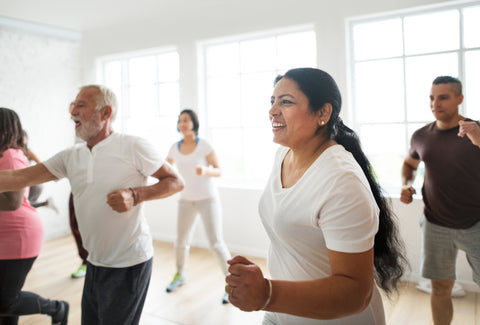Don’t Fall for It – “Sit to Stands” are Grand!
I met with a new home client yesterday who told me that he falls all the time but assumed that this was a normal consequence of his clumsiness. Goodness NO! As you probably know, one of the most frequent causes of death for older adults is “complications from a fall.” At the risk of sounding overly dramatic, I told my new client that fall prevention is truly a matter of life and death.
There are many ways to minimize the chances of a dangerous fall, but I’m just going to write about one thing you can do in this article today. Keep an eye out for my upcoming blogs to learn about additional things you can do to reduce your risk of falling.
Regular exercise:
This is (in my opinion as a Master Certified FallProof Instructor) THE most important thing you can do to reduce your risk for falls. Exercise helps you to maintain lower body strength, which is crucial. Let’s face it – everyone stumbles and trips a little during the day, but if your legs are strong enough, they can help you catch yourself. If your legs are weak, then you will be much more likely to fall.
One of the easiest and most practical ways to improve your lower body strength is to do “Sit to Stands.” You simply sit down and stand up from a chair. Try to do a few Sit to Stands before every meal, and gradually increase the number of repetitions.
When you sit down, try to descend as s-l-o-w-l-y as possible – this will really help to strengthen your fall prevention muscles.
If you need to use your hands on the chair to stand up, then do so, but work towards using your hands as little as possible. The most advanced hand position is to cross your arms across your chest so that you are only using your lower body muscles to propel yourself.
To measure your progress, see how many Sit to Stands you can do in 30 seconds. Take note of which chair you use, and record the number of times you stood up.
It will be rewarding to see how much you’ve improved when you time yourself again in a month or so. Just be sure to use the same chair so you’re comparing apples to apples. As I’m sure you know, it’s a lot easier to stand up from a tall rigid chair seat than a low squishy couch.
These super-fast Sit to Stands are also a great way to add power to your workout, which is especially important as we get older. Adding speed and power help to keep your fast twitch muscles tuned up, which help you to react quickly (which is essential when you stumble.)
Boring? You bet! But anything’s better than falling and ending up in the emergency room! Stay tuned for more fall prevention tips in my next blog.









